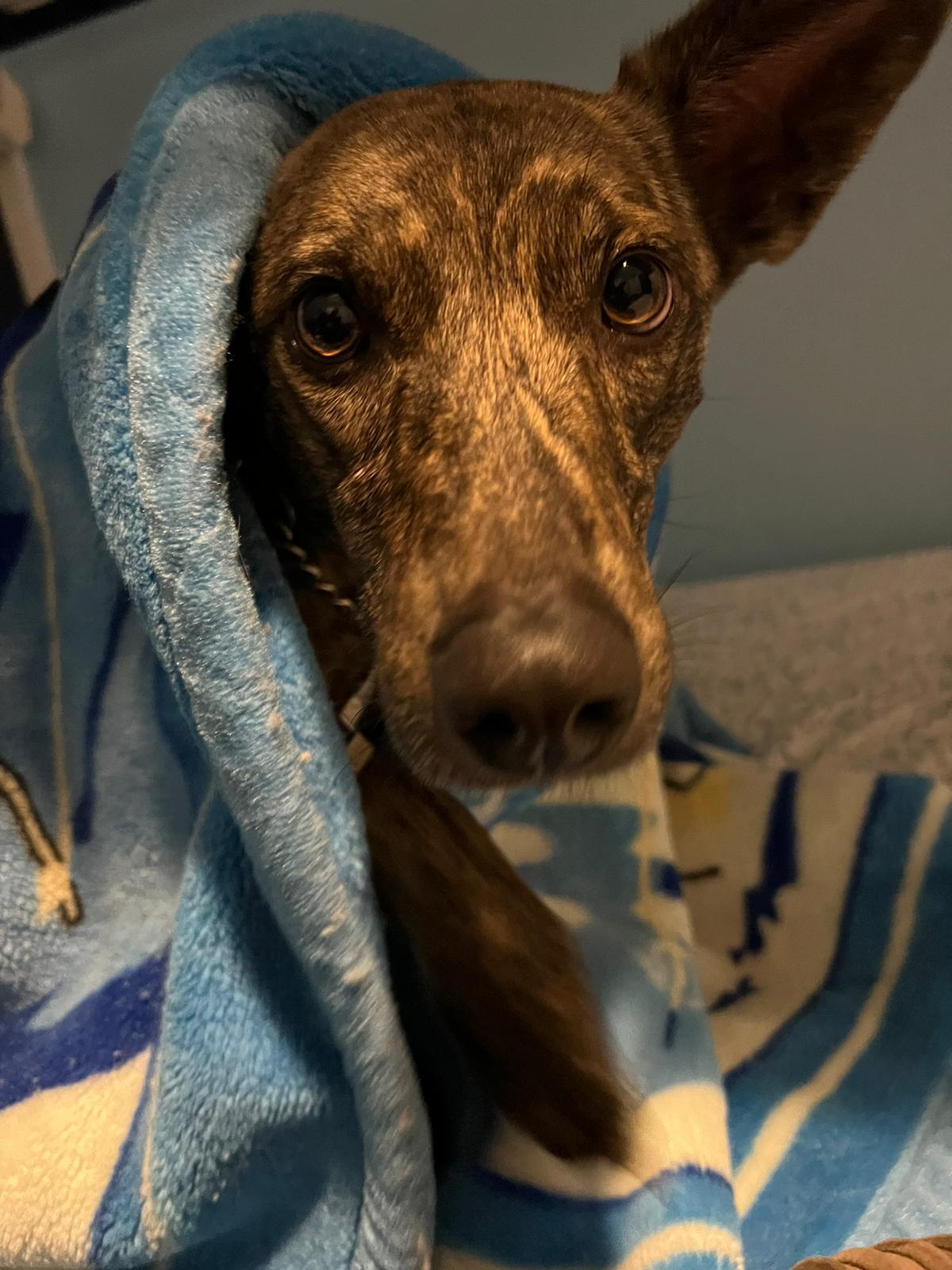Fear versus Aggression in Dogs
2023-02-07

How to Tell the Difference Between Fear & Aggression in Dogs
When a dog becomes fearful it is likely there has been a negative association created to a specific stimulus or a mass variety of stimuli. It is extremely important to not rush a fearful dog or to use force to get them to comply, this could cause a nervous or fearful dog to respond with one of these stress responses; flight, fight, freeze, fiddle around, or faint (rolling over submissively). If you observe any of these 5 responses you should immediately stop what you are doing and try to analyze what you can do to help the dog.
Common indicators of stress: Ears pinned back (sideways for a dog with straight ears) Tail tucked Excessive drooling Excessive panting Refusal to eat Sudden shedding and excessive dander (blowing coat) Lowered body Corners of the mouth are tight Holding their breath Crescent moon eyes Dilated pupils
Cut-off or Calming Signals: Yawning Licking lips Puffing Shaking off Sniffing the ground Scratching Turning or looking away from the stimulus Moving slowlyWhen a dog displays these behaviors they are usually trying to self soothe. You should reward these requests by providing space for the dog and moving away from whatever is causing the dog stress.
Ways to alleviate stress include: Stop what you are doing and take a break Break down the exercise into smaller steps Remove the dog from the environment Use barriers so the dog is unable to see the stimulus Redirect the dogs attention
Do not pet or try to soothe the dog if they are displaying stress signals. This will only encourage the behavior to continue. Only reward cut-off signals using praise, treats, affection and toys once the dog disengages. A fearful dog will lunge and/or bite if provoked to provide itself with space. Going slow and reading the dog's communication will prevent this from escalating.
What does aggression typically look like? There are two kinds of aggression and ways to see it through a dog’s body posture. They are both typically paired with certain stress indicators as well.
Important! Once a dog utilizes aggression (barking, lunging, biting, guarding) and they are successful in achieving what they wanted, typically space, a dog will always use it again at some point.
Offensive Threat Posture Tail up and stiff Hackles up Standing tall and forward on toes Ears forward Corners of the mouth forward Wrinkled nose
A growl typically goes along with this posture. A dog displaying offensive threat posture will typically bite at the slightest provocation. Avoid physical corrections. These will more than likely cause the dog to redirect onto the handler or increase the aggression. Avoid collars that constrict or cause pain. These will only create a negative association or reinforce the negative association. With this type of dog it is best to use treats to regain focus through basic obedience.
Defensive Threat Posture Hackles up Tail tucked Ears back Pupils dilated Nose wrinkled Corners of the mouth back Body lowered
During the defensive posture, the dog is being self-protective. This is typically more of a fearful dog that is unable to get out of the situation, but will react to create space. Avoid physical corrections and anything that causes pain. Use food rewards and calm praise to empower a fearful dog’s cut-off signals.
Indicators a dog may bite include: Direct eye contact Tail straight up and stiffly wagging Chest pushed out Standing with legs wide apart Ears up Low rumbling growl Hackles up Dog freezes or holds its breath
_Important: Not all dogs will show signs they are about to bite. Many dogs have been taught to suppress their warning signs by being “corrected” when they growl or show their teeth.If ANY of these behaviors are being shown follow this list of “Dos and Don'ts” _ Do Approach Slowly and not directly (curving) Keep hands low and nonthreatening Talk calmly Observe for posture and stress signs Be aware of all your actionsAvoid direct eye contact Yawn and stretch your arms downwards repeatedly
Don't Move quickly Lean or tower over the dog Yell or shout Reach over your head/shoulders Force yourself onto the dog Make direct eye contact Approach if you're uncomfortable
Leash Reactivity Typically caused by frustration because the dog is unable to greet or reach another dog or person. Many owners use physical corrections which cause this problem to worsen. The corrections will often create a negative association just based on the approach of another dog or stranger. Lunging, barking, growling, fixating and whining are all signs of a dog that is “over-threshold”. If they display these behaviors you should get the dog away from the stimulus as soon as possible.
Ready for Dog Training?
Tell Us About Yourself
Tell Us About Your Dog
Find Out How We Can Help
We know your dog is unique. Before making any recommendations, we need to evaluate your dog's needs.
Connect with a team member for more information